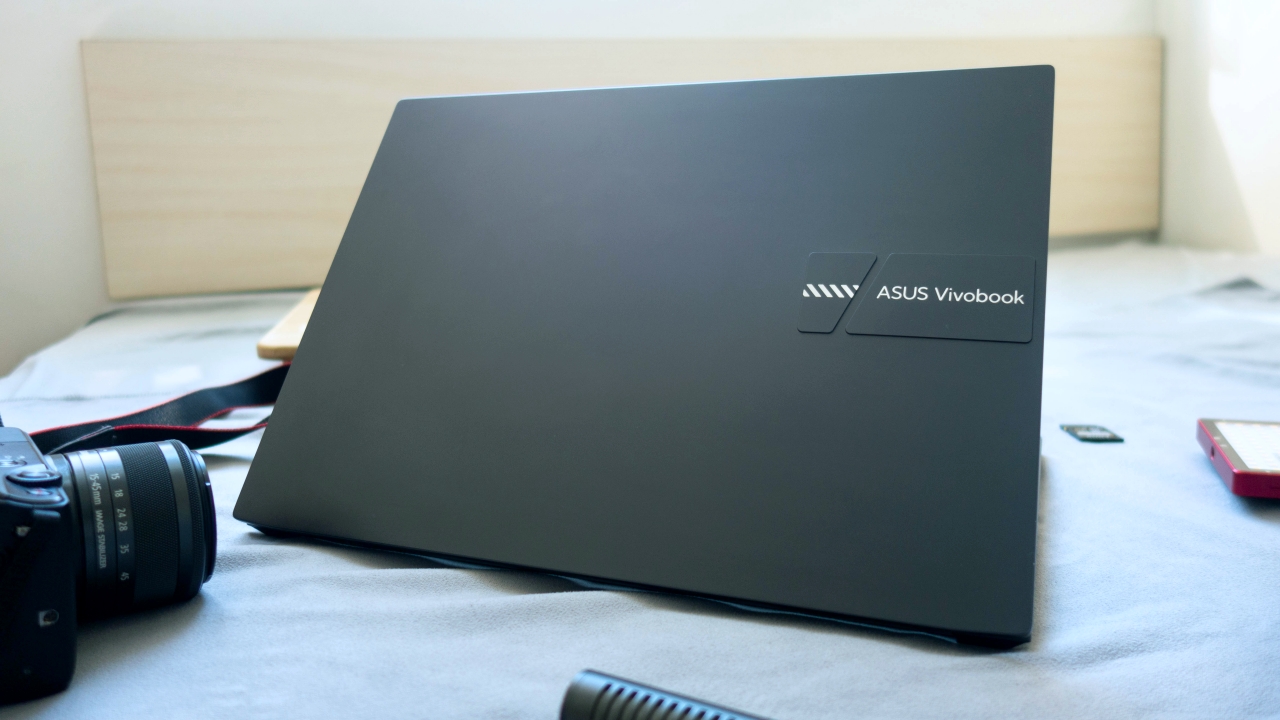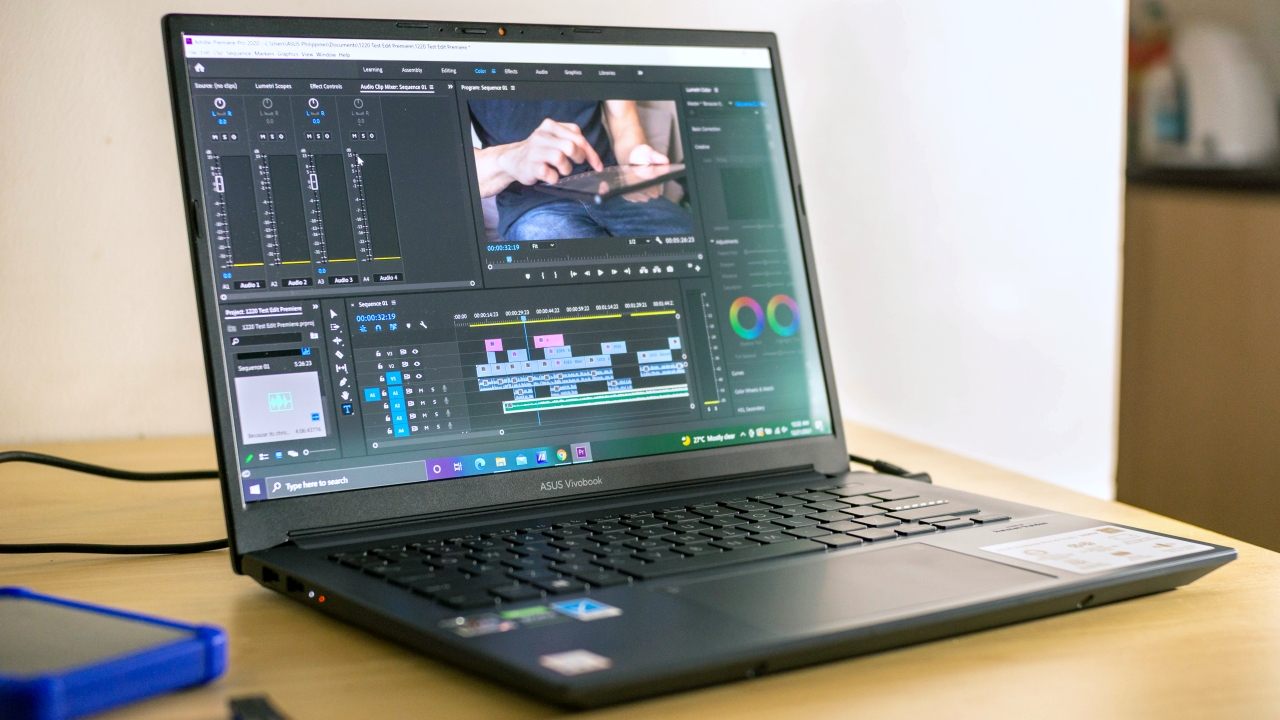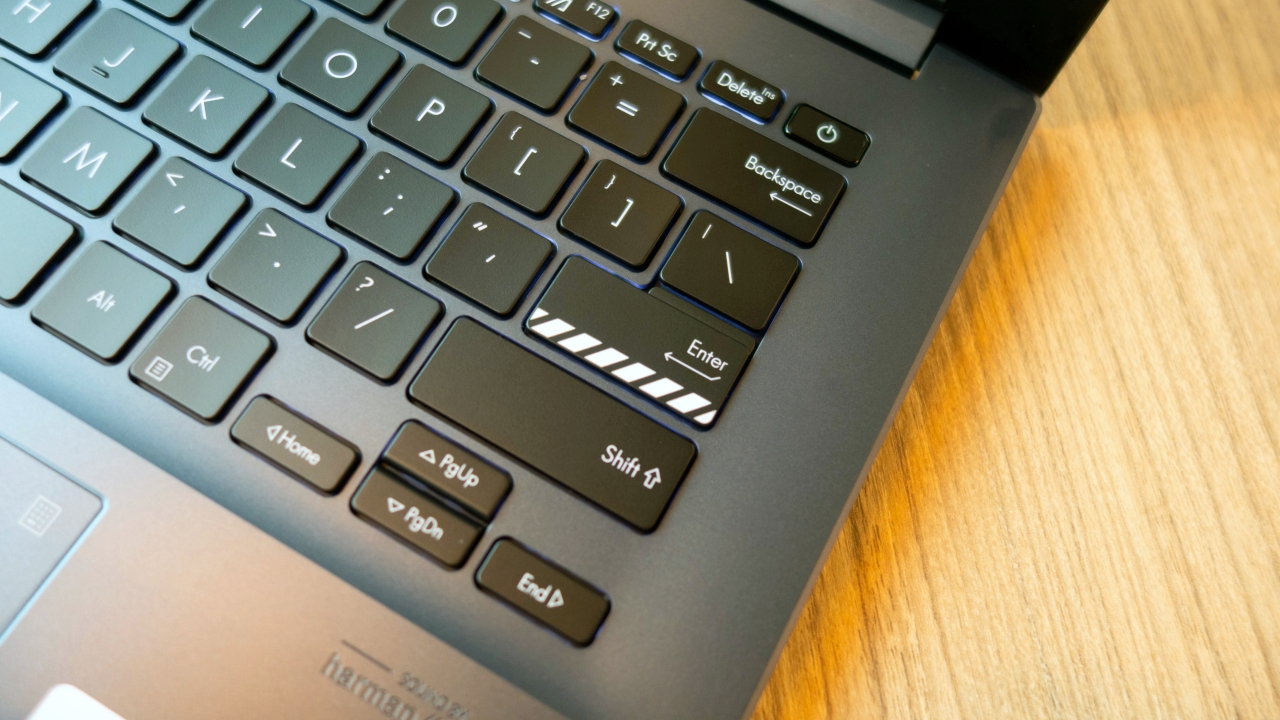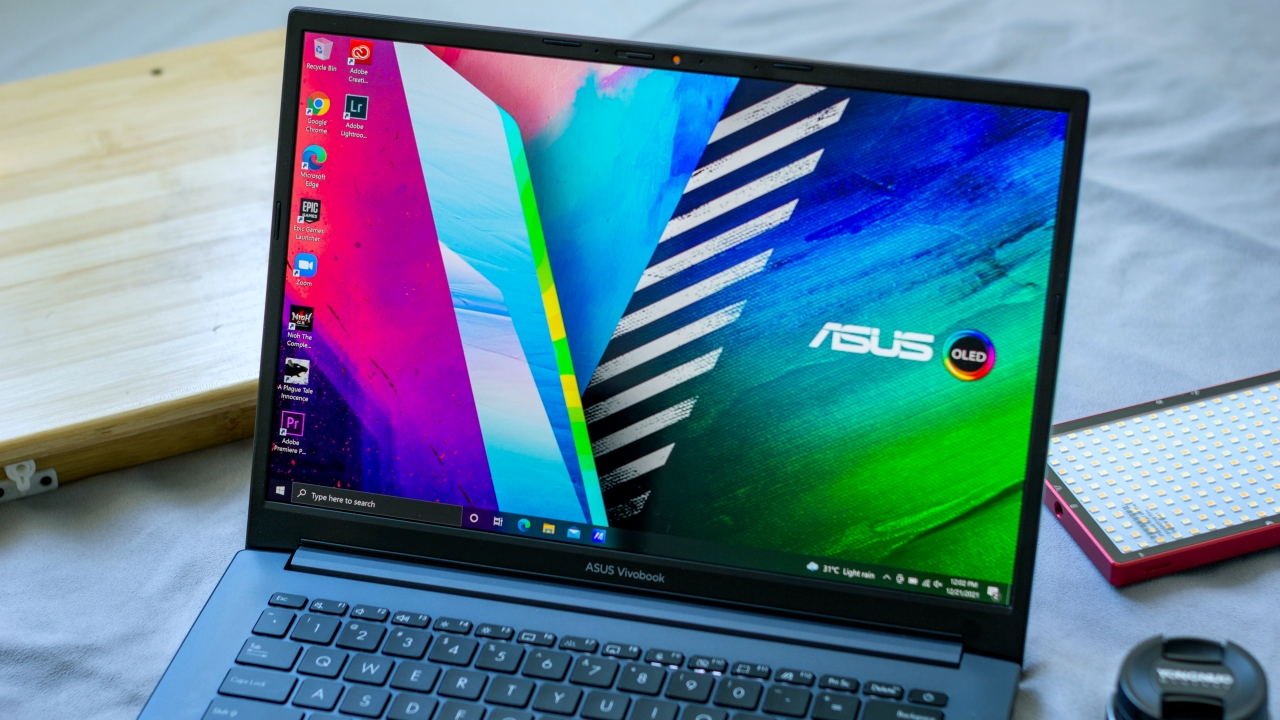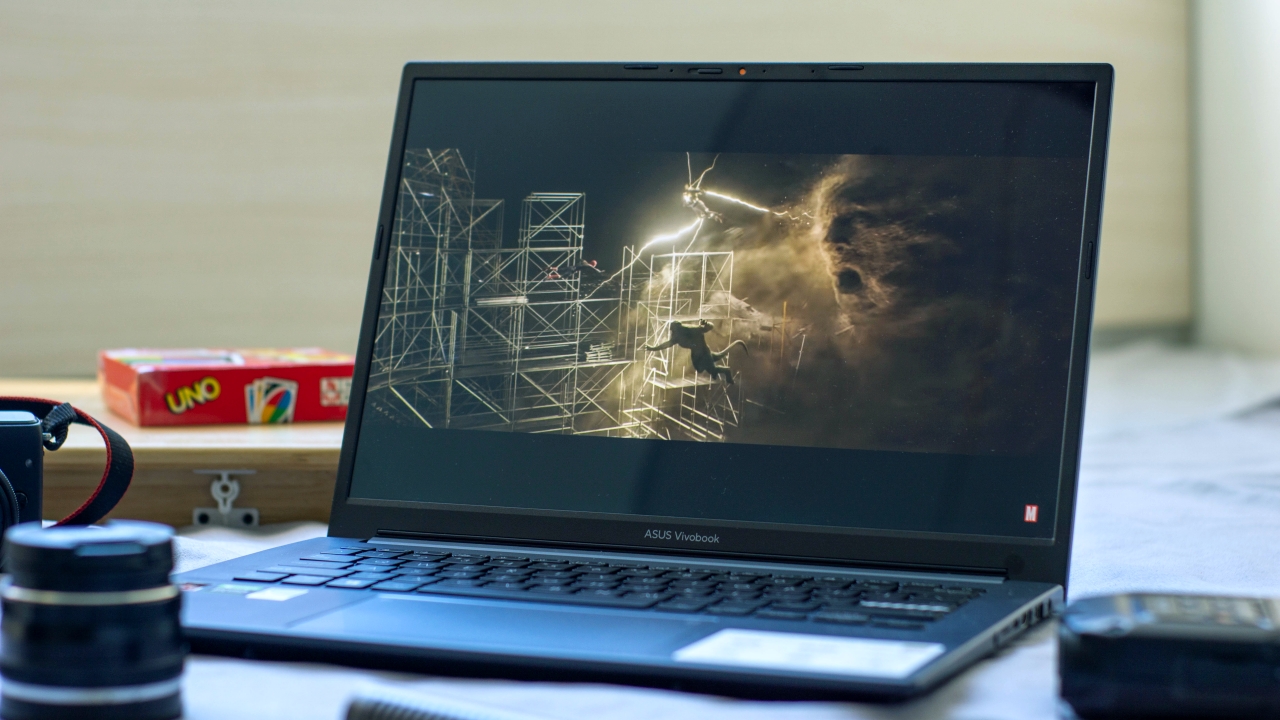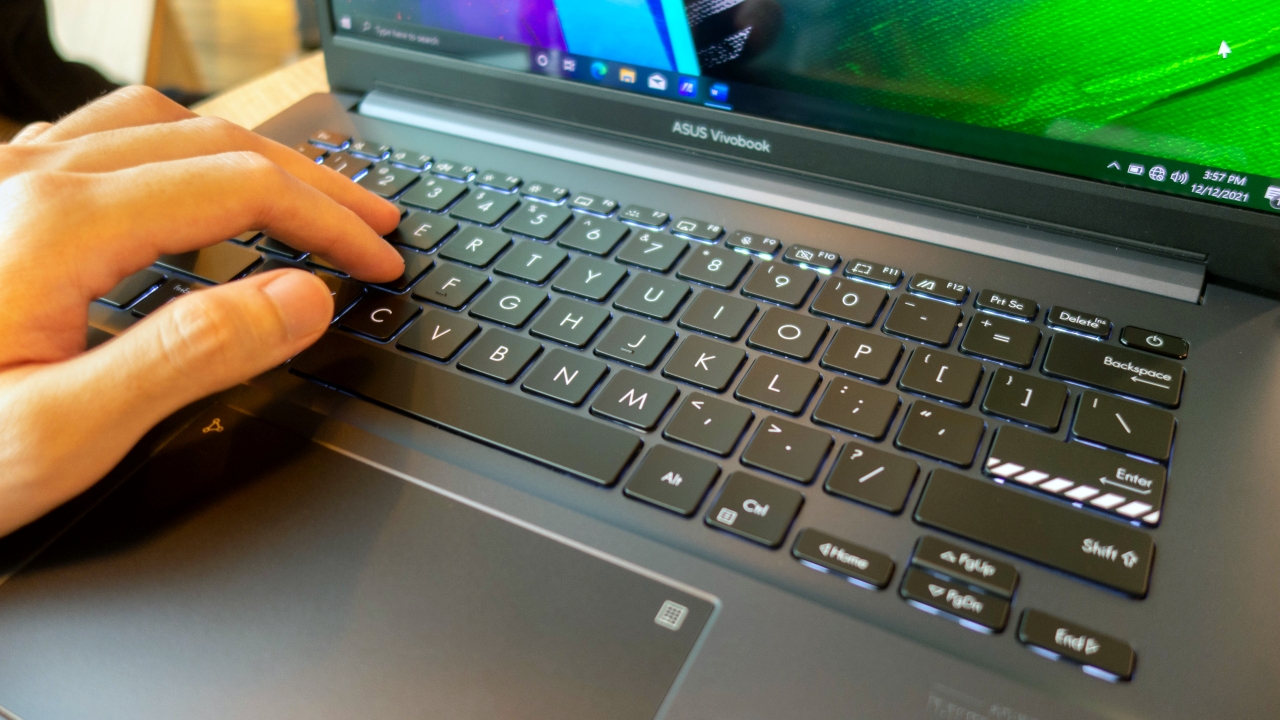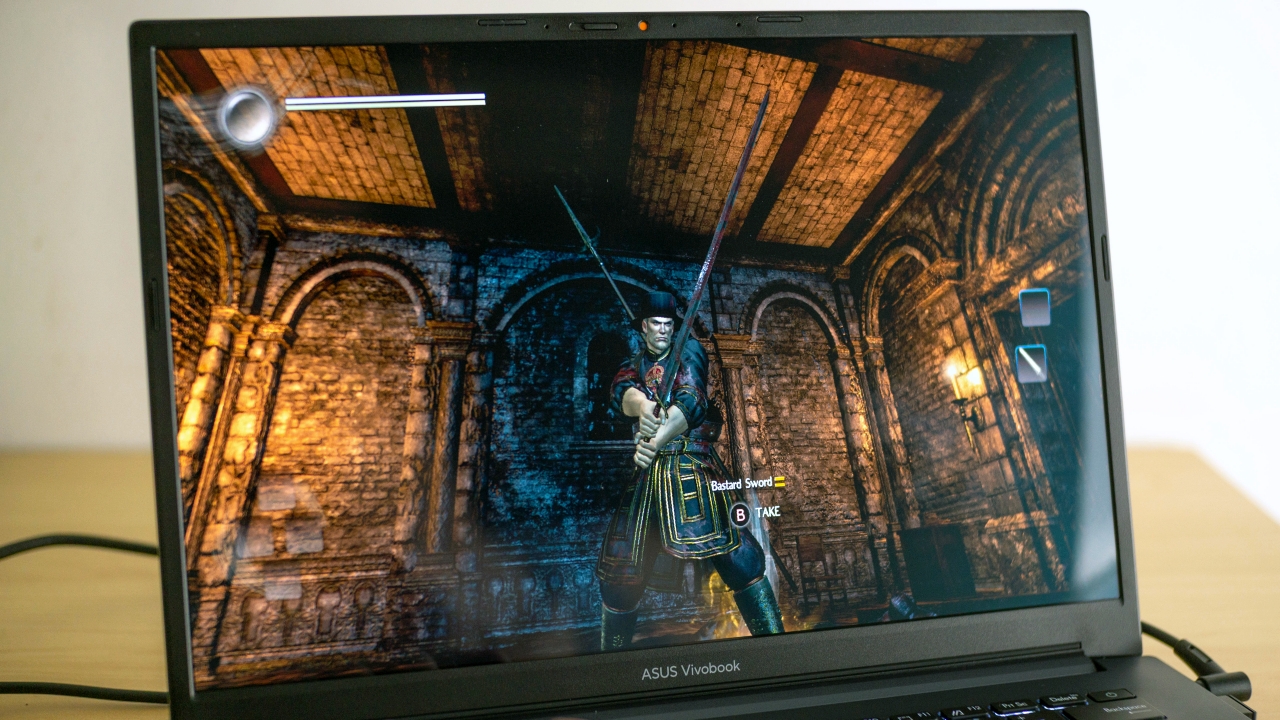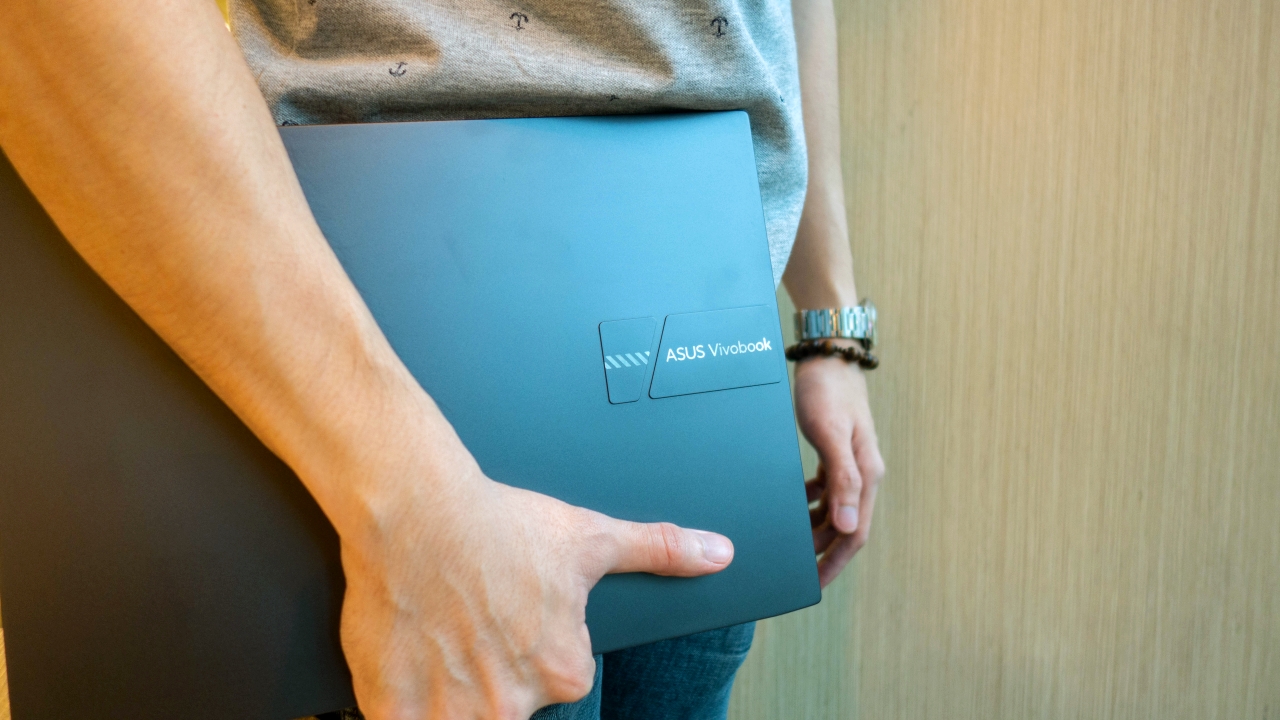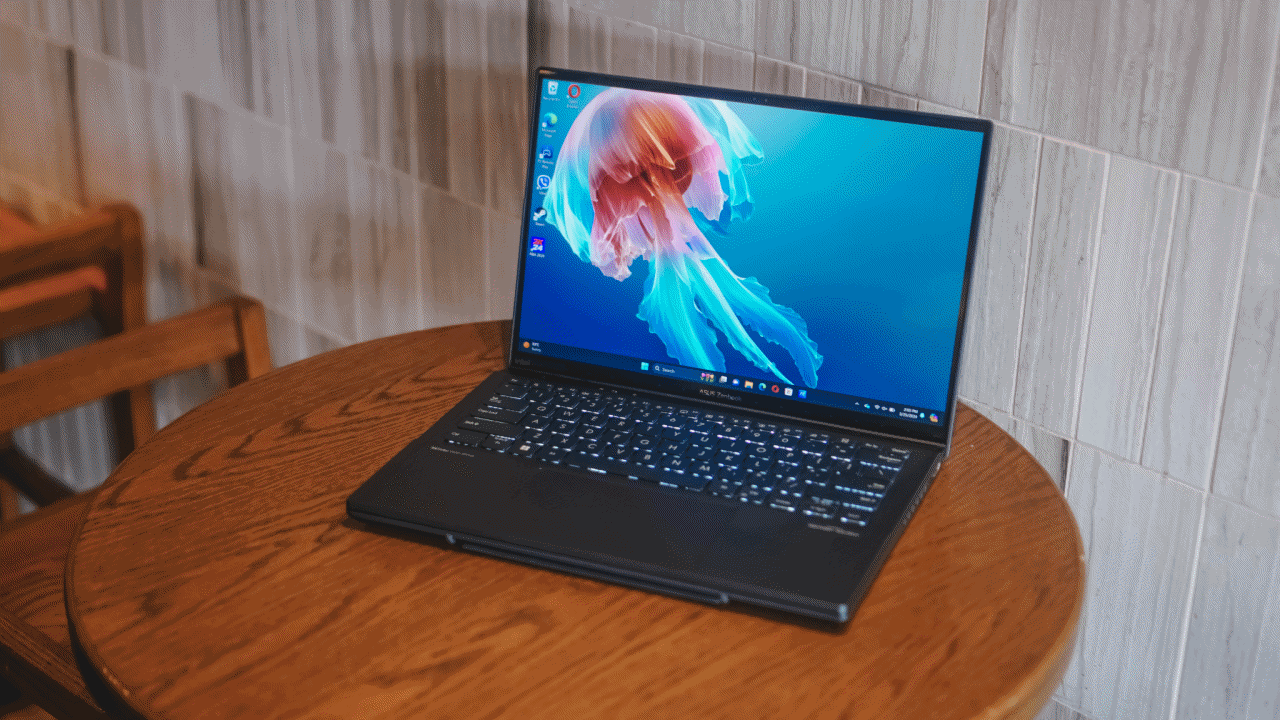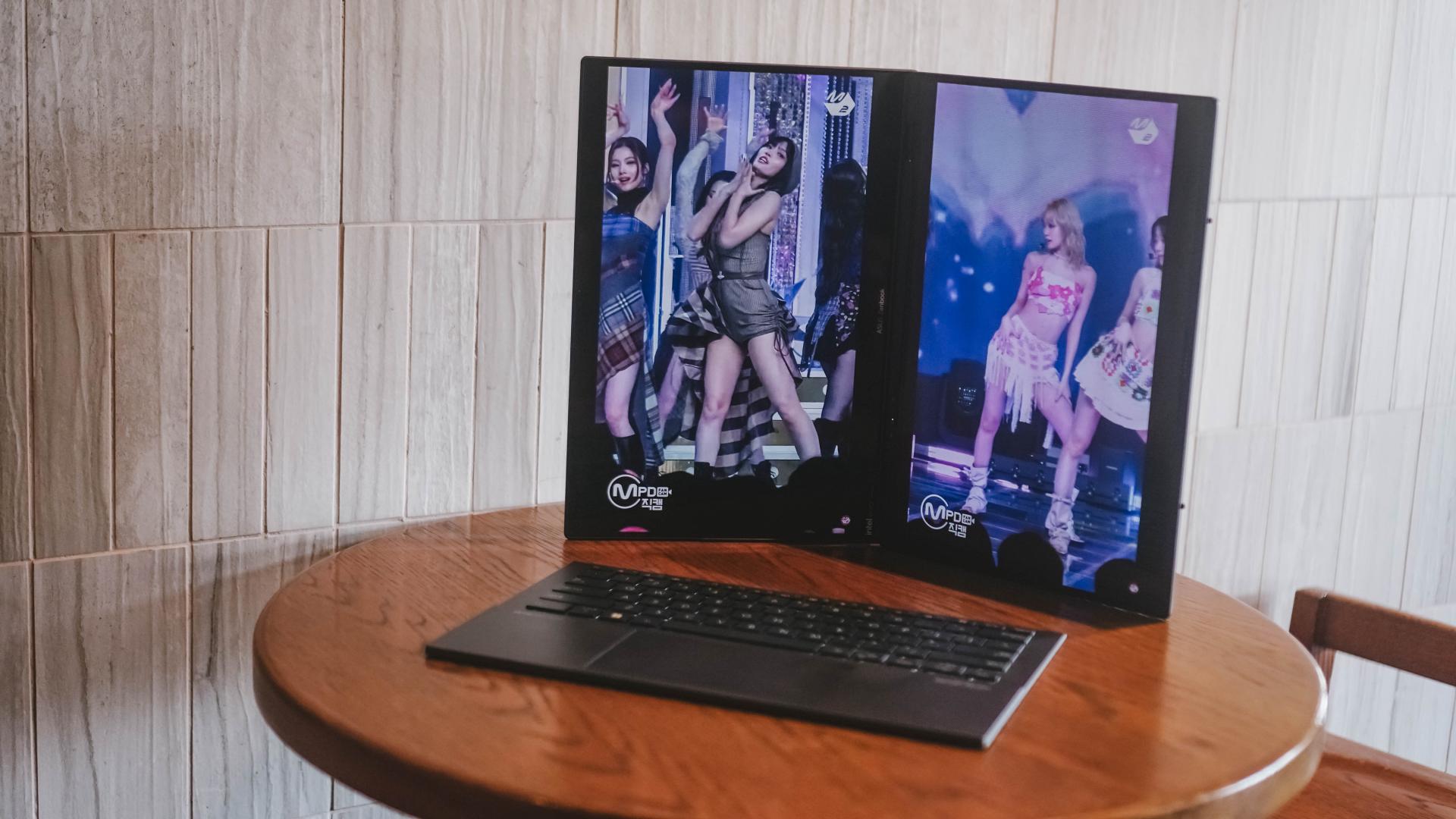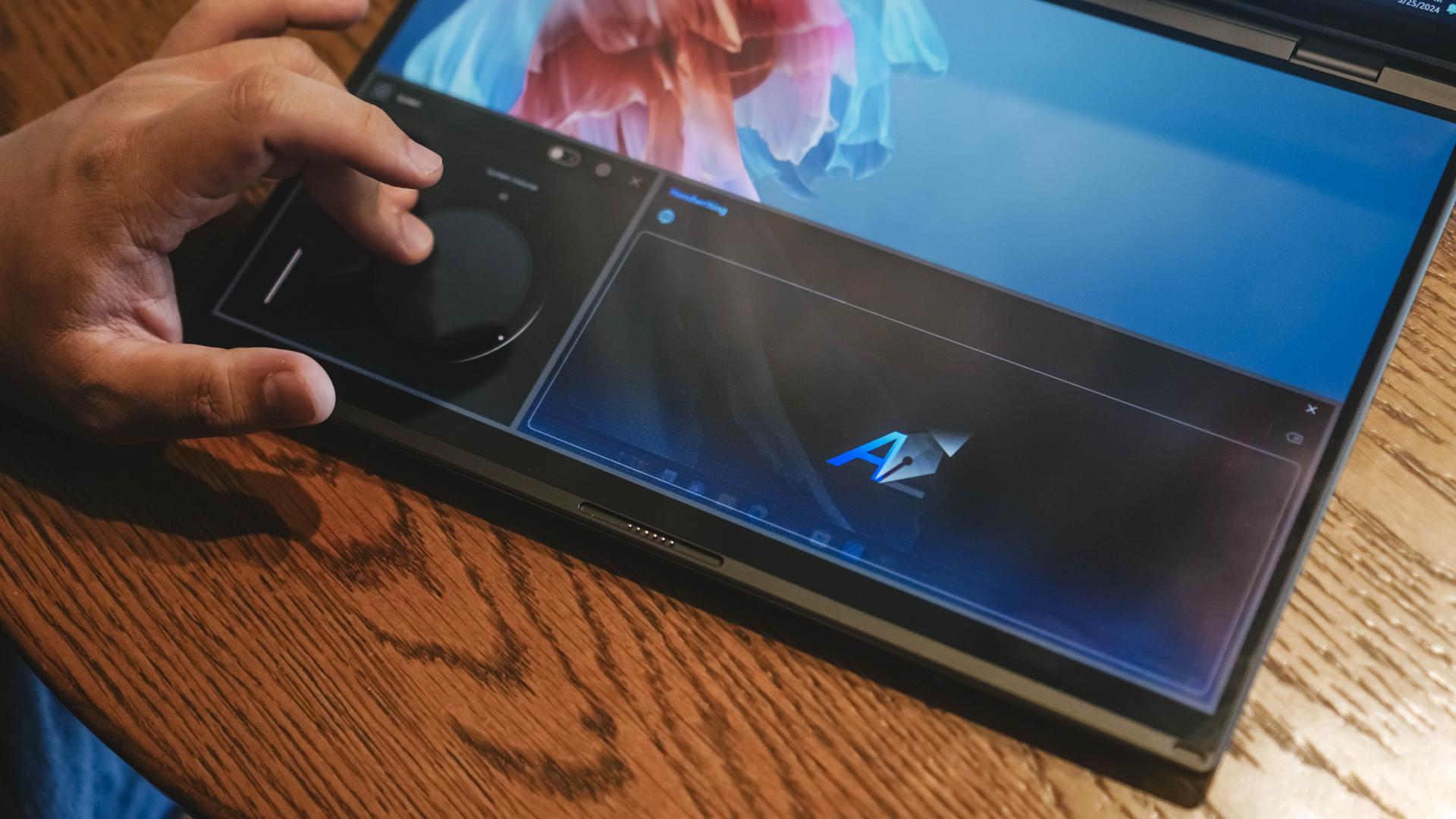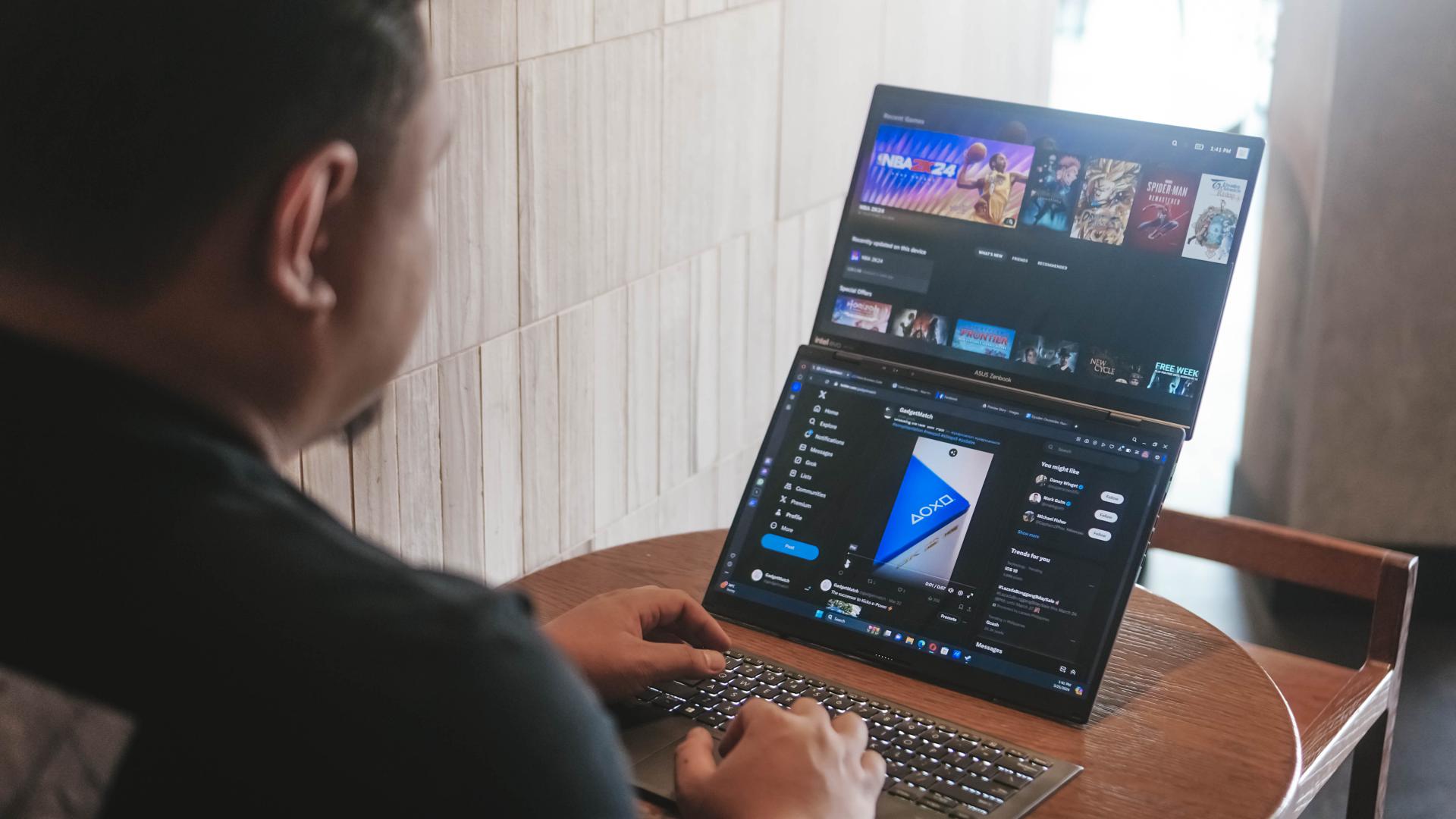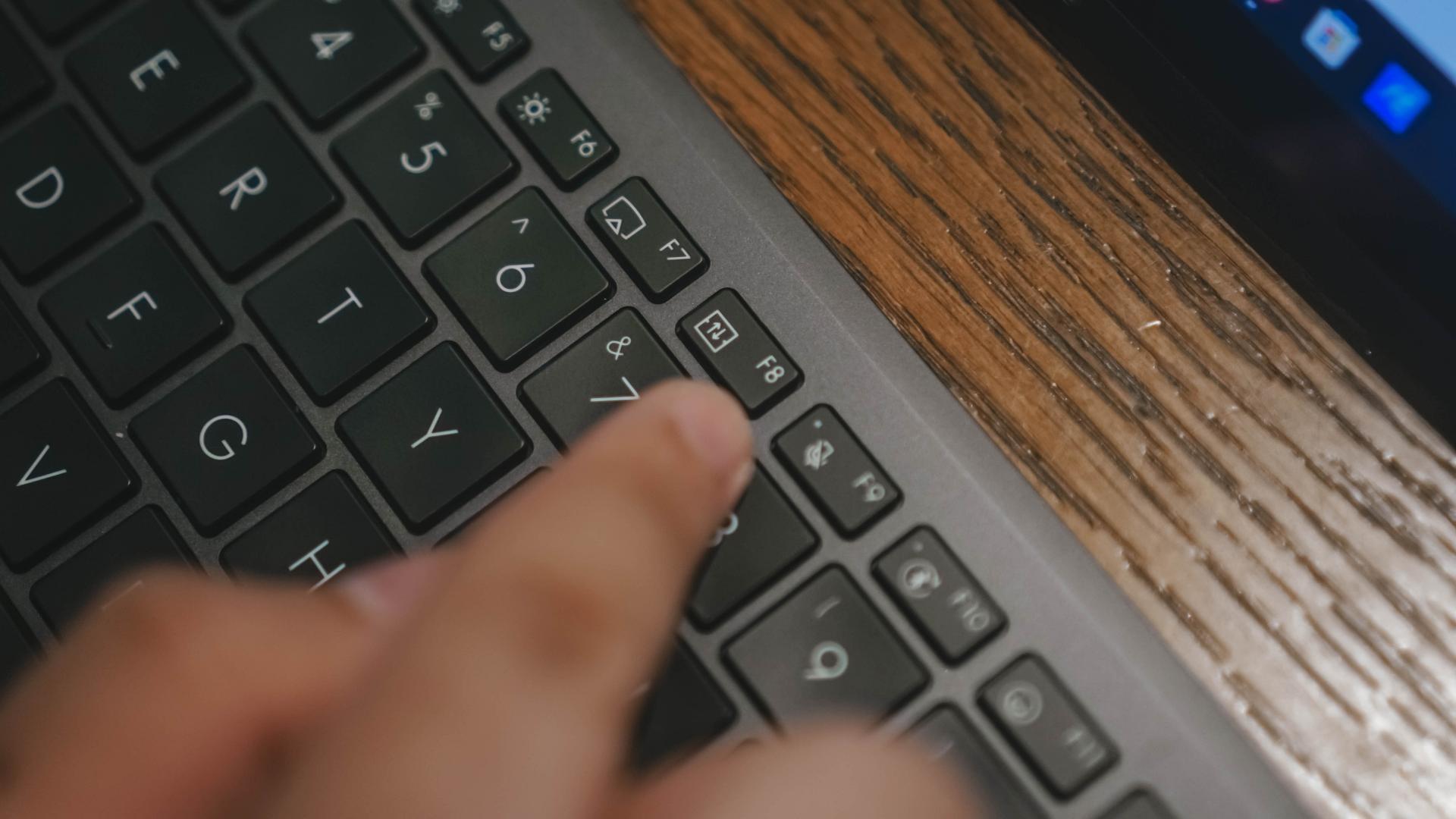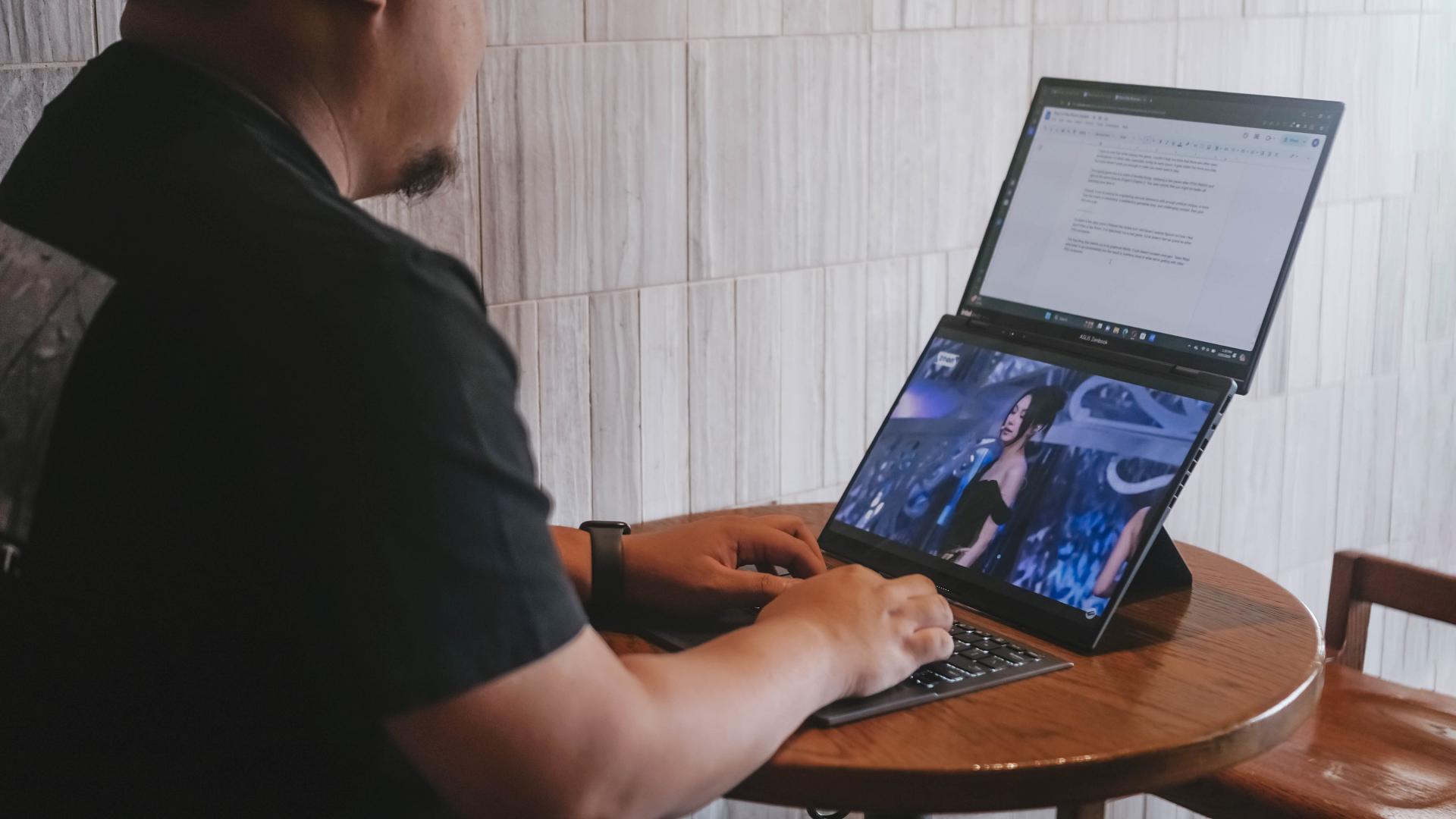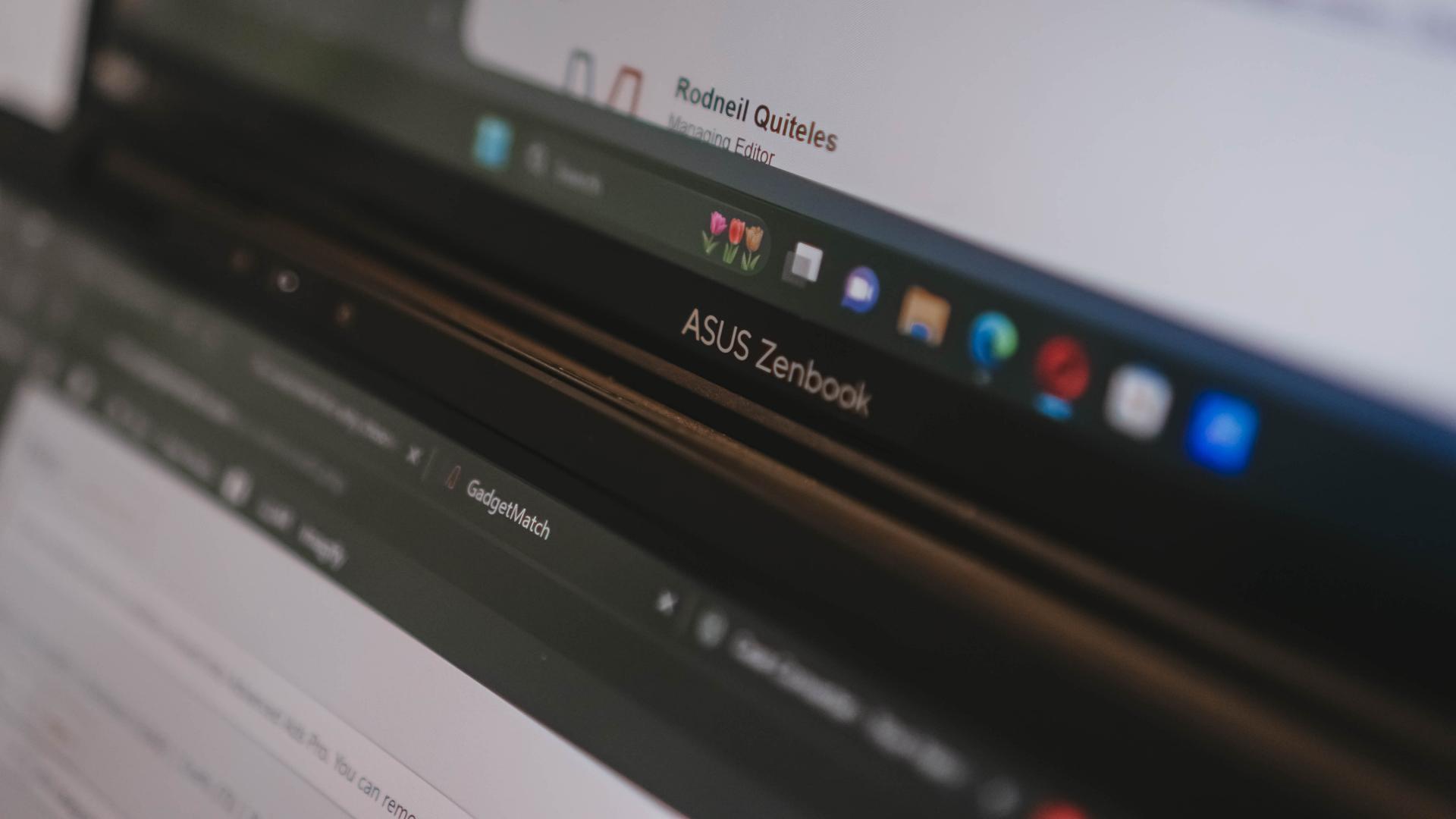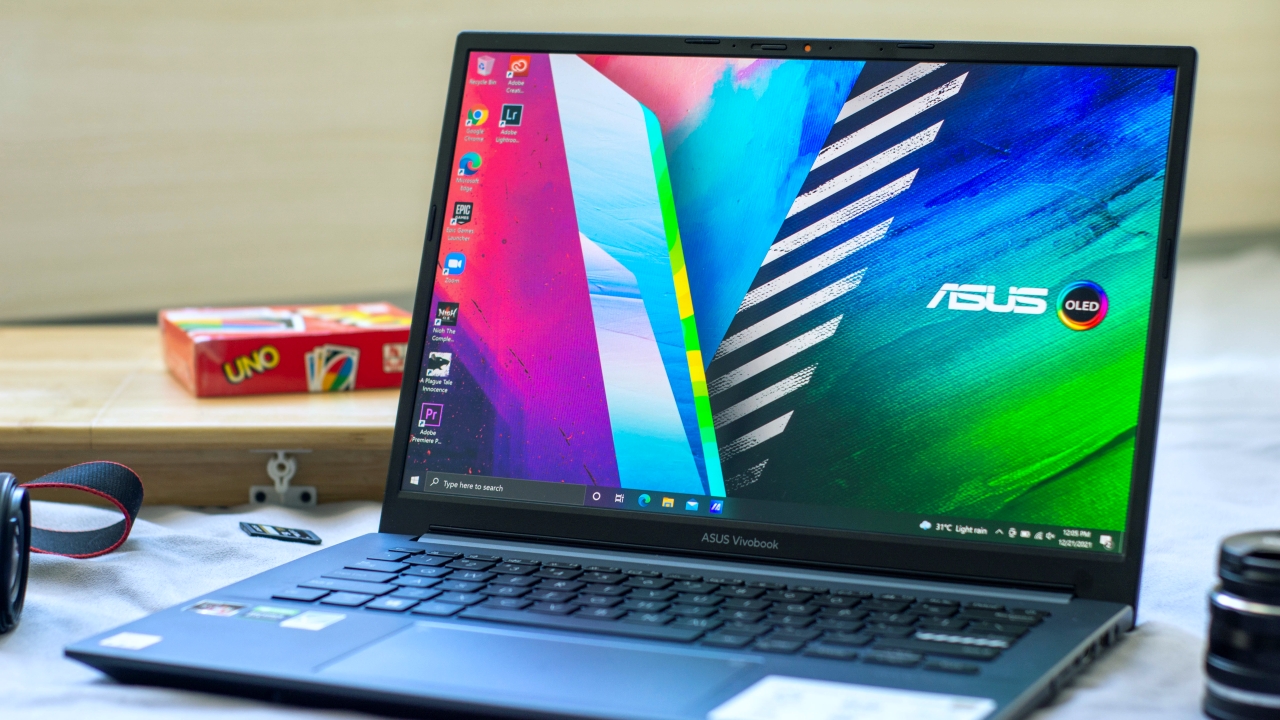
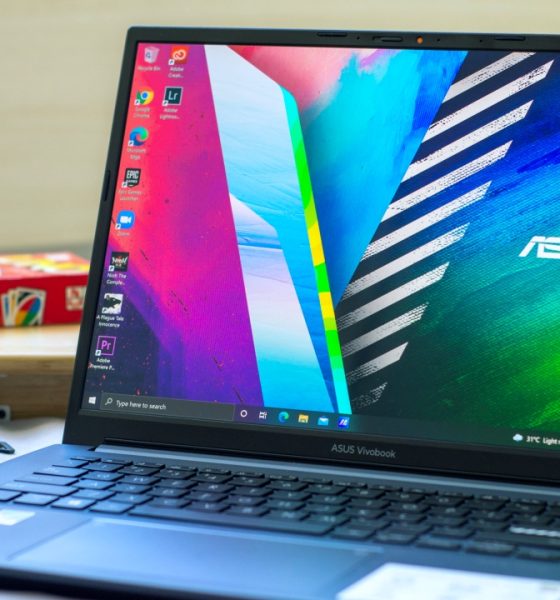
Laptops
ASUS Vivobook Pro 14 OLED: Creators’ vision turned reality
One fine content creating machine
I’ve said this before and I’ll say it again — ASUS is a brand who isn’t afraid to be different. Not only do they give us devices with the best possible specs but also create devices that are actually enjoyable to use and have innovation with real world purpose and functionality.
If the consumers need it, they probably have a device for this specific niche.
Today, with content creation being a thriving industry, ASUS focuses on the needs of creators this time as they unveil their new ASUS Vivobook Pro 14 OLED.
Now, let’s see how much power and potential did ASUS pack in this compact laptop.
Specs-tacular
The Vivobook Pro 14 OLED is running on the Ryzen 9 5900HX processor paired with the NVIDIA RTX 3050 with 16GB of DDR4 RAM and 512GB SSD storage.
I’ve been reading about this CPU for a while now so when I saw this processor in the specs sheet, it was just pure excitement for me. I felt like a kid opening a Christmas present as I already had an idea of what this processor could offer.
It’s an eight core, sixteen thread CPU which competes and in some instances even beats its competition from Intel, the Core i9 11980HK. To put it further, it’s among one of the fastest laptop processors this 2021.
Designed for creators
Despite being a heavy weight in terms of specs, the Vivobook Pro 14 OLED is a light weight in its actual design. This device is almost as portable as an ultrabook weighing only 1.45kg with a thickness of 17.9mm. I can’t even imagine how ASUS is able to pull off packing these specs in such a small profile.
If I were to describe how this laptop looks in one word, it would be “refined.” It feels clean and minimalist and doesn’t grab too much attention with the way it looks.
Flipping the lid open, you’ll notice the print on the Enter key which seems to subtly hint the stripes we see on film set clappers. A subtle detail which makes us creators feel right at home.
The top lid is made of aluminum material with a machine embossed cutout housing the Vivobook branding which looks modestly different but also relatively attractive.
The frame holding the keyboard feels strikingly similar to those of the Zenbook book line and it feels robust to the touch.
We have a great deal on the port selection on this device. Placed on its right side is a USB-A, full sized HDMI, USB-C, microSD card reader and a 3.5mm headphone jack. And on the left are two USB-A ports.
The Vivobook Pro 14 OLED comes in two color options, the Quiet Blue and Cool Silver.
Vividly visual
I used to have the ASUS Zenbook OLED as my top contender for the best laptop display but really, this one just takes the crown. We’re looking at a 14-inch, 16:10 aspect ratio, 2.8K resolution, OLED display with a 90Hz refresh rate and it looks dazzling!
Seriously, this is just so good for photo editing. You’ll definitely notice the sharpness and every little detail in the photos as you’re editing.
It comes with all the benefits of the OLED technology having the ability to display true blacks and very vibrant colors that doesn’t rely on its brightness. I was actually able to see details in darker parts of the image I was editing that I didn’t even notice on my personal laptop.
Of course, being intended for creators, we expect this would be guaranteed under some sort of display capability verification. In this case, we are getting a DCI-P3 color gamut rating of 100 percent, Pantone Validation and certified with 70 percent lower blue light emissions.
In other words, this is a display panel which won’t get you lost in comparing your colors with other devices or even print media and long hours of editing won’t be eye-straining.
Convenience at your fingertips
Whenever I get to use a new laptop, it usually takes a while to adjust to typing on the keyboard. I adjusted fairly quickly with the Vivobook Pro 14 and it is quite a pleasure to use. The key sizing is comparable to the ones in 15-inchers and they feel like they’re full sized. It also has substantial feedback and key travel. I wasn’t feeling mushyness while typing on it and it also doesn’t feel cramped having adequate key-spacing. Setting the key mapping on Adobe Premiere and my hands sat nicely on my assigned shortcuts.
This keyboard also illuminates with white backlight which is helpful when we’re using it in a dimly lit environment. I can see this being very handy for wedding SDE editors. They’re usually editing in makeshift locations. It also won’t ruin the wedding mood since it doesn’t look gaming oriented.
Placed on the top right corner of the keyboard is the fingerprint power button. This lets us log in to our Windows account without having to type on a password which substantially decreases log on time without compromising security.
While it matches the look of the other keys, I don’t think accidentally hitting it to shut off the device would be a concern since it does have a different actuation feel than the other keys. It also helps that it’s leveled slightly lower than the keys beside it.
ASUS is again using their NumberPad 2.0 on the trackpad on this device. It’s a dual function trackpad that functions both as a trackpad and a number pad. Users can access it by holding on the icon on its top right corner. It’s considerably large and I can say, it’s pretty good at recognizing my touch gestures. It’s also smooth with a nice slippery feel.
Remarkable performance
I’m pretty confident with the specs on this laptop so I decided I’d edit a pile of backlog videos I had to finish on it. I didn’t realize how much time is wasted whenever I edit on my personal laptop as this eliminates stuttering and the loading times when choosing clips. Even the short lag when applying effects or switching tabs was gone. I also found myself not having to pre-render sequences and still this laptop does not back down.
Given that this laptop has a lot of power, I figured it would do well in some gaming since us creators, we also like to play games. So I went on and gave Nioh a shot. Without holding back on the settings, the game ran flawlessly with everything maxed out at its full 2.8K glory.
For a more graphically intensive game like A Plague Tale: Innocence, the RTX 3050 is respectably capable of running it at ultra settings at its highest resolution having only a few dropped frames. Though these games might be a bit dated, these are still triple-A titles and are still demanding. Which means if we’re just planning on running esports titles, then we can expect this laptop to handle those with ease.
It’s also worth mentioning that the Vivobook Pro 14 OLED comes pre-installed with Windows 10 out of the box. However, immediately upon logging in the first time, I already had the prompt if I wish to upgrade to Windows 11.
Cool and quiet
We do know that high power in a small package is a recipe for overheating. But that is not entirely true with the Vivobook Pro 14 OLED. This has the Dual-fan ASUS IceCool Plus technology implemented inside of this slim body.
During my Nioh gameplay, it managed to get 79 degrees Celsius and occasionally hit the 80 degree mark but only for less than a second. What’s more impressive is that it’s really quiet. You can barely hear it running unless you place your ear near the body of the laptop.
Battery and charging
Battery performance would of course vary person to person. And since I prefer not to compromise my experience, I mostly kept the brightness setting pretty high, keyboard backlight turned on and doing a variety of moderate to heavy tasks. I was able to get a decent five hours on battery which would likely get even longer if I was behaving a bit on my usage and on power saving mode.
For charging, it took two hours and nine minutes to get it from 15 to 100 percent which is pretty average for a high performance laptop but quite slow if compared to modern ultraportable laptops.
Is the ASUS Vivobook Pro 14 OLED your GadgetMatch?
I know I may sound like such a fanboy of this laptop all throughout this review and now that we’ve come to the end, I guess I can say I am.
It just has a lot of strong points that really makes it an irresistible choice.
As a creator, I can confidently say that I can give up my existing laptop and use this in a snap without second thoughts. If I would look for something I didn’t like about it, it’s probably because it isn’t mine. But I wouldn’t mind saving up for it since I know it’ll pay itself back with the work it’s gonna be doing for me.
The ASUS Vivbook Pro 14 OLED has a price of PhP 74,995 for this R9 5900HX, RTX 3050, 16GB RAM with 512GB SSD variant. There’s no doubt that this is a really good value for what you’re paying for.
It’s also available for PhP 59,995 for the R5 5600H, RTX 3050, 8GB RAM with 512GB SSD variant. Meanwhile, there’s one that costs PhP 47,995 for the R5 5600H, AMD Integrated graphics, 8GB RAM and 512GB SSD variant.

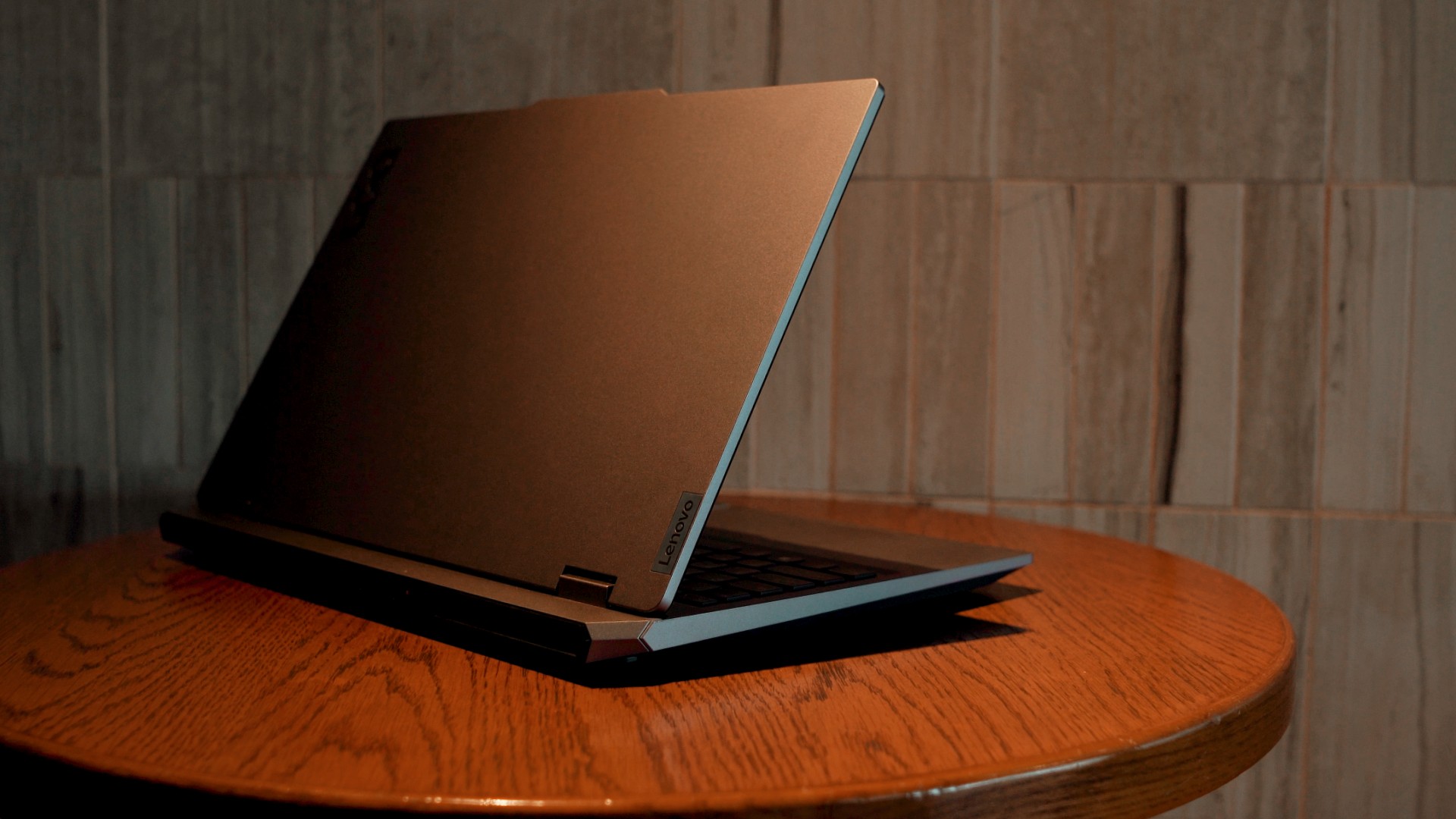
Get your game on with the Lenovo LOQ 2024. This capable laptop is your entry point to PC Gaming and a lot more.
It comes an absolutely affordable price point: PhP 48,995.
You get capable hardware and the hood to support gaming and more. The Lenovo LOQ 15IAX9I runs on the 12th Gen Intel Core i5 processor and Intel Arc Graphics.
Those are key to bringing unreal graphics to this segment. Supporting latest tech like DirectX 12 Ultimate, players are able to enjoy high frame rates on the Lenovo LOQ.
Creating content? It comes with AI Advantage to help boost performance. Engines and accelerators boost the media processing workloads especially for creatives. It also works with Intel’s X Super Machine Learning, Leading to images that are as close to reality.
The laptop supports a configuration of up to 32GB of RAM and 1TB of SSD Storage.
As for its display, the device has a large 15.6-inch, Full HD panel that is more than enough for gaming, video editing, content consumption, and whatever else you do on a laptop. This display has 144Hz refresh rate, 300 nits brightness, and anti-glare.
Videos come out clear, crisp, and realistic. Audio is punchy and as loud as it gets. Windows Sonic elevates it more when you use headphones. And it just takes a few minutes to render HD videos on editing software.
As it runs on Windows 11, if you are going to use it for work, you can take advantage of various features. The Lenovo Vantage Widget is there for constant reminders, Copilot will help you organize your tasks, and Microsoft Edge is there for casual browsing.
There is an assortment of ports at the back for easy connectivity. And as this is meant for gaming, we put it to the test. Racing that looks better with high frame rate? Check. Shooting titles that require heavy work? Not a problem. You can play all your favorites and not worry about performance.
Best of all, it takes less than an our to juice up this laptop all the way to 100%.
So, whether you’re looking to get started with PC Gaming, or an upgrade for work and entertainment needs, the Lenovo LOQ has you covered.
This feature is a collaboration between GadgetMatch and Lenovo Philippines.

The ASUS Zenbook Duo 2024 came into my life at such a weird time. Over the past few months, I have been actively trying to build a workflow that’s not reliant on having to bring a laptop all the time. Yet, here comes ASUS’ latest and possibly best dual screen laptop yet, opening up possibilities I personally never even imagined.
Here’s my time so far with the ASUS Zenbook Duo 2024.
Multiple modes
The multiple modes available to you with this unique form factor have been well documented. But here’s a quick recap.
Naturally, there’s Laptop Mode. If you don’t care for extra attention when you’re out and about while working, this is likely the mode you’ll stick with most of the time. Due to its nature, this is also the mode where you’ll be able to squeeze out more usage from the device because the other screen is not in use. More on that later.
There’s Dual Screen Mode. Next to Laptop Mode, this is the orientation I use the most, especially when I’m able to plug the device. So, at home, this is mostly how I used the Zenbook DUO 2024. I’m starting to get so used to this mode that when I do work on the regular Laptop Mode, something feels lacking.
Lastly, there’s Desktop Mode. It’s essentially just like Dual Screen Mode but with the Dual Screen in portrait orientation. I’ve never used this to work and only really went to this orientation to showcase it.
A key thing that makes all of these possible is the underrated inclusion of a kickstand. It feels like a natural part of the whole contraption that it’s mostly just a passing mention in most discussions about the Zenbook DUO 2024. But I think it’s a big part of what makes all of it work seamlessly.
There isn’t a name for it but you can also lay the laptop flat on the table fully spread. It’s great when you’re trying to present something to someone across the table. Also feels like more apps can get some sort of use-case for it if the form factor ends up being popular.
Other knick knacks
ASUS also made sure to make this as usable as possible even if, for whatever reason, you misplace the bluetooth keyboard.
You can tap the bottom screen with six fingers to pull-up a Virtual Keyboard. It’ll never feel as good as a physical keyboard, but it’s there in case you happen to need it.
Swipe down with six fingers and you’ll get the Easy-access tools. Here you’ll have handy things like handwriting input, the control panel, as well as the number key and quick key.
Lastly, you can tap the screen with three fingers to get the Virtual touchpad. This layout is reminiscent of the earlier Zenbook Duo designs.
Does anyone ‘need’ this?
They say necessity is the mother of invention, so what was the thing that necessitated the creation of this dual screen laptop?
Personally, I think more screen real estate is always a boon. And over the years, more and more people have squeezed out plenty of usage out of multi-monitor desktop setups. What ASUS did here is they took that concept and made it more mobile.

For me specifically, I’ve used it to run two browsers side-by-side. One for the material I need to reference, the other for the Google Doc that I stare blankly at as I try to cobble words together to make sense of things.
It’s also great for video editing. You can have one entire screen to be the preview area and reserve the other for your timeline and work area. It’s so much easier than having to preview your video on 25% or less of a regular screen.
In these particular instances, productivity is most definitely enhanced. It saves time because you no longer have to press alt+tab as much to switch apps. And it’s easier than ever to glance at multiple apps at once.

Part of my work is also communicating on multiple chat apps. There’s Slack, Messenger, Telegram, WhatsApp, and Viber. Different sets of folks prefer different apps. It can be cumbersome but it’s something I’ve gotten used to. Having Dual Screens as well as the ability to split view apps in these screens has been a godsend. It’s now easier and faster to see which apps have a pending message I need to attend to.
And you can just as easily switch what’s on each screen with a single tap of this button on the F8 key.
It didn’t exactly feel like it while I was using the Zenbook DUO 2024, but as I now sit and ponder on how I’ve used it over the past couple of weeks, I definitely see how it’s helped me get some things done faster even if it’s just by a small percentage.
It’s also great to just have a video running on either screen while you work on the other.
Lastly, there’s this little quality of life thing where my primary screen is now near eye-level even if I’m not using a separate monitor. It’s great for one’s posture. I just have to find a better work chair now.
A Dual Screen believer
Over the past year, I have fancied myself a foldable enthusiast. On the daily I switch between the OPPO Find N3 and the HONOR Magic V2. Something about having more screen real estate flips a productivity switch in my brain.
I can’t say the Zenbook DUO 2024 has had the exact same effect, but it’s definitely in the same neighborhood. The additional screen has unlocked possibilities that at this point, I would say are still just “nice-to-have.” I can certainly still go back to a regular laptop and not miss a beat. When it comes to smartphones, I think my personal preference now is totally the foldable kind. I’m not there yet when it comes to laptops.
That said, this form-factor definitely has merit. Even Lenovo has something similar with the Yoga 9i. That alone will show you that there might just be enough demand for this kind of laptop.
Dual drawbacks
There are two things, though, that don’t make this an absolute slam dunk for me. That’s Microsoft Windows and the battery life.
For context, I’ve been using a 2020 13-inch MacBook Pro M1 for the better part of the last four years. And prior to that, I’ve used a MacBook Pro for most of my time as a media professional. When it comes to software fluidity and battery life, I have been spoiled.
To me, Windows just isn’t as fluid and does not feel as seamless as MacOS. Don’t get me wrong, it has certainly come a long way. I get by now with the same gestures using only the trackpad. There was a time when Windows trackpads just weren’t usable for me.
Don’t get me wrong, I am fully aware of the advantages of Windows and how much more control you can have over it if you’re the type to really dig down in the settings. But that’s not me. I do not have the luxury of time to be doing so much tweaking.
And while the Windows vs MacOS thing is debatable and largely boils down to preference, the same isn’t true for battery life. With my 13” MacBook Pro M1, I feel confident going out and not having to plug it for an entire day. I know I’ll have enough juice left for an entire heavy work day and then some.
That just isn’t true for the ASUS Zenbook DUO 2024. Especially since I prefer using it in Dual Screen mode. That means I am limited to around 3.5 to 4 hours in this specific mode because the screens consume more power and the bluetooth keyboard can only last that long.
These aren’t absolute deal breakers, but they are things you definitely should consider if you’re thinking about getting this dual screen machine. You best know all the spots with an electricity outlet or at least have a heavy duty power bank on hand to keep things running all day.
Is the ASUS Zenbook DUO 2024 your GadgetMatch?
All things considered, the ASUS Zenbook DUO 2024 is a fantastic machine. After two weeks, I haven’t even tapped into its full potential yet, but the improvements in my work efficiency are noteworthy.
At PhP 129,995, it does command a hefty price tag. Whether or not the benefits are worth it will ultimately come down to how you plan to incorporate its dual screens to your workflow. If you see yourself needing to work on dual screens while you’re on the go, this is about as good as it gets.
Everything equipped in this machine is top-of-the-line: Intel Core Ultra 7 155-H, 32GB of LPDDR5x RAM, 1TB of PCIe 4.0 NVMe M.2 SSD storage, and more. You also get a healthy number of ports: 2x Thunderbolt, 1x USB 3.2 Type-A, 1x full-size HDMI 2.1, 1x audio combo jack.
There’s more than enough power here to fuel most workflows. And you get all of that with twice the number of screens. I wouldn’t jump in blindly, but if the ASUS Zenbook DUO 2024 is something you fancy, you’ll definitely feel special once you have it on hand.
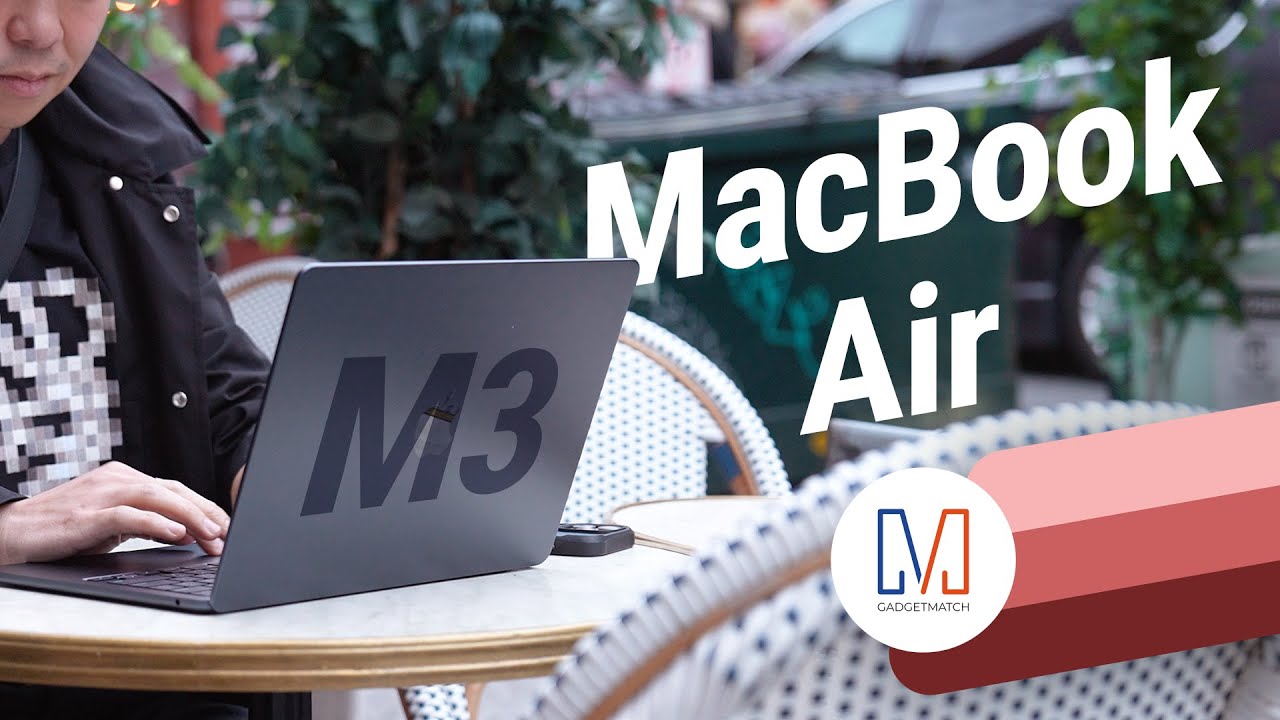
Everyone’s favorite MacBook just got an update!
It’s more powerful, faster in many ways, and it’s even better at AI.
But should you go rushing out to buy one?
Here’s our Apple M3 MacBook Air review.
-

 Features1 week ago
Features1 week agoFortify your home office or business setup with these devices
-

 Events2 weeks ago
Events2 weeks agoStellar Blade: PlayStation taps cosplayers to play Eve for game’s launch
-

 Gaming2 weeks ago
Gaming2 weeks agoThe Rogue Prince of Persia looks like an ultra-colorful roguelite
-

 Accessories2 weeks ago
Accessories2 weeks agoLogitech unveils G Pro X 60 gaming keyboard: Price, details
-

 Gaming2 weeks ago
Gaming2 weeks agoStar Wars Outlaws release date revealed
-

 Reviews1 week ago
Reviews1 week agorealme 12+ 5G review: One month later
-

 Gaming2 weeks ago
Gaming2 weeks agoLenovo confirms development of a Legion Go 2
-

 Deals2 weeks ago
Deals2 weeks agoTCL P635 TV: Big savings for TCL’s anniversary

